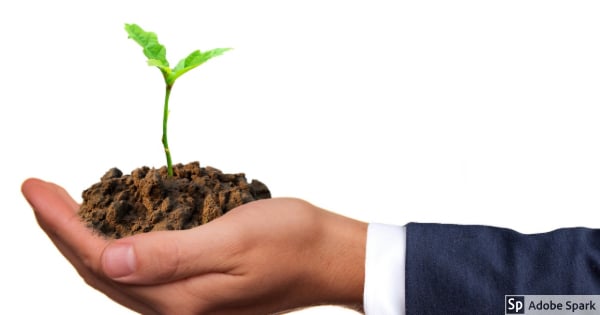Nowadays, more businesses are making the choice to go green than ever before. This is especially true for beginning entrepreneurs just getting started. It’s much easier for a brand new business to go green than one that already has everything set in motion; the sooner you start working towards an eco-friendly model, the more options you have available to you. If you’re starting out your business and want to include environmental values in your business plan, here are a few steps you can take to design a greener business.
From The Ground Up
If your business plan calls for a physical location and you’re lucky enough to have the funds for construction, you’re in a great position to start out on your path to a green business. Constructing your own building means you get to select all your building materials and techniques, giving you the freedom to choose specifically green building materials. Not all green materials are as outlandish as you might originally think; even concrete can be a good eco-friendly alternative for building. Concrete is also compressively strong, increasing durability long-term. Strengths up to 20,000 psi are possible, but strengths between 3,000 and 7,000 psi are more commonly used. Work with your contractor to pick out your preferred green building techniques to start out on the right foot.
Maintain What You’ve Got
Not everyone has the option to customize their building from the very start. If you’re moving into an existing location, however, there are still things you can do to turn your space into the perfect set up for a green business. Even if you can’t afford to add anything right at the start, a key step to keeping a business green is maintaining and making the most of what you already have. The better you are at maintaining your equipment, the more efficient it will be. That means it will take less energy to keep your business running, reducing your overall carbon footprint. Start with utilities that are relatively familiar, even if you’re new to your industry, such as heating and cooling for your building. For maximum efficiency, HVAC system air filters should be changed every three months at the very least.
Don’t forget about the area surrounding your business as well. In addition to keeping your business looking great, you’ll have to replace materials that are breaking down less frequently, saving resources over time. This includes furniture, walls, and even fencing. Most experts recommend painting or staining a wood fence every two to three years.
Add Alternative Energy
Want to take a more drastic step to keep your business as eco-friendly as possible? It might be worth checking out renewable energy sources. Many people see solar energy as an incredibly expensive option for either a home or business, but it might not be as big of an expense as you’re expecting. According to the U.S. Department of Energy, the average cost of solar PV panels has dropped more than 60% since 2010 and the cost of solar electric systems has dropped by 50% since that time. This is a larger investment and won’t be reasonable for every business, but it’s well worth taking a look at.
Certifiably Green
If you’re finding yourself at a loss for ideas on how to take your business to the next level with eco-minded goals, you might want to take a look at the requirements for different green business certifications. Plenty of certifications are available for various components of your business, from the building itself to your products and more. Getting a certification can also help your marketing too; most customers notice a certification when there is one. You’ll be able to take steps to promote your business while also doing good for the environment.
There are plenty of avenues for both new and established business owners to improve their impact on the environment. How do you plan to help your business go green?










